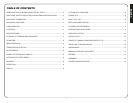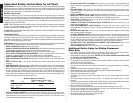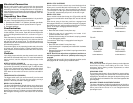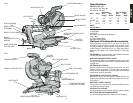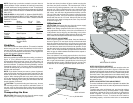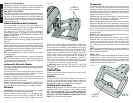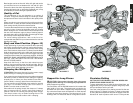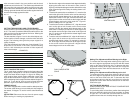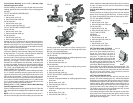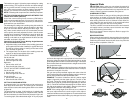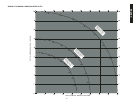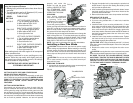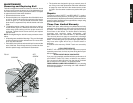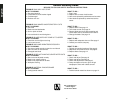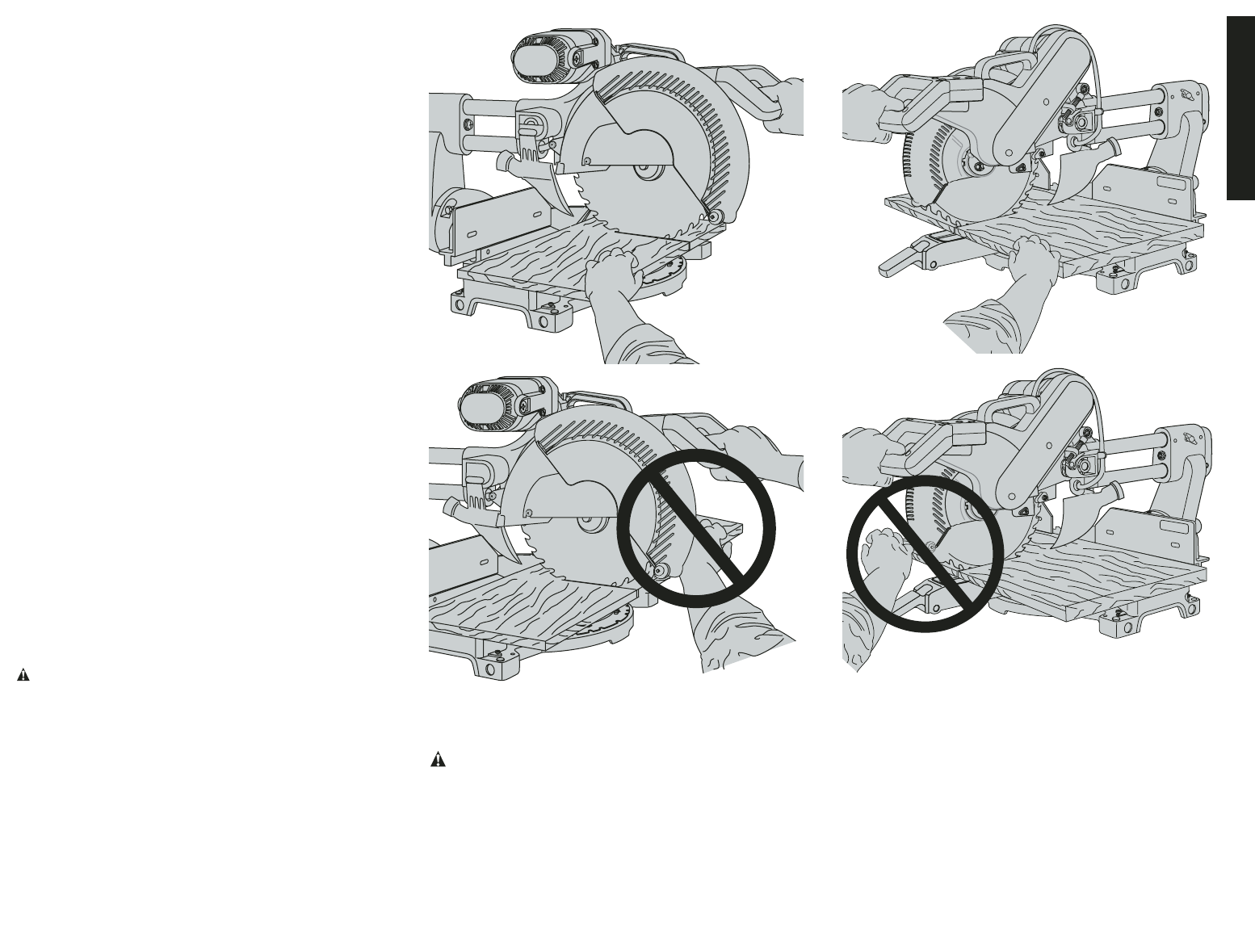
Bevel angles can be set from 48° left to 48° right and can be
cut with the miter arm set between 50° left and 60° right.
Ensure the fence has been adjusted properly. When per-
forming right bevel cuts, or right miter compound cuts, it may
be necessary to remove the right adjustable fence.
Quality of Cut
The smoothness of any cut depends on a number of
variables. Things like material being cut, blade type, blade
sharpness and rate of cut all contribute to the quality of the
cut.
When smoothest cuts are desired for molding and other
precision work, a sharp (60 tooth carbide) blade and a slow,
even cutting rate will produce the desired results.
To ensure that material does not creep while cutting, clamp it
securely in place. Always let the blade come to a full stop
before raising the arm. If small fibers of wood still split out at
the rear of the workpiece, apply a piece of masking tape on
the wood where the cut will be made. Saw through the tape
and carefully remove tape when finished.
For varied cutting applications, refer to the list of re-
commended saw blades for your saw and select the one that
best fits your needs.
Body and Hand Position (Figure 16)
Proper positioning of your body and hands when operating
the sliding compound miter saw will make cutting easier,
more accurate and safer. Never place hands near cutting
area. Place hands no closer than 6" (152mm) from the blade.
Hold the workpiece tightly to the table and the fence when
cutting. Keep hands in position until the trigger has been
released and the blade has completely stopped. ALWAYS
MAKE DRY RUNS (UNPOWERED) BEFORE FINISH CUTS
SO THAT YOU CAN CHECK THE PATH OF THE BLADE.
DO NOT CROSS HANDS.
Keep both feet firmly on the floor and maintain proper
balance. As you move the miter arm left and right, follow it
and stand slightly to the side of the saw blade. Sight through
the guard louvers when following a pencil line.
Clamping the Workpiece
CAUTION: Disconnect the saw from the power supply
before moving it or making any adjustments.
If you cannot secure the workpiece on the table and against
the fence by hand, for instance, when cutting an irregularly
shaped piece, or when your hand would be less than 6”
from the blade, a clamp or other fixture should be used.
For best results use the DW7082 clamp made for use with
your saw. It is available through your local retailer or
D
EWALT service center at extra cost.
Other aids such as spring clamps, bar clamps or C-clamps
may be appropriate for certain sizes and shapes of
material. Use care in selecting and placing these clamps.
Take time to make a dry run before making the cut. The
fences will slide from side to side to aid in clamping.
9
English
FIG. 16
CORRECT CORRECT
INCORRECT
INCORRECT
Support for Long Pieces
CAUTION: Disconnect the saw from the power
supply before moving it or making any adjustments.
Always support long pieces.
For best results, use the DW7080 extension kit to extend the
table width of your saw. The attachment is available for
purchase from your dealer. Support long workpieces using
any convenient means such as sawhorses or similar devices
to keep the ends from dropping. The base top is 3.5" tall,
allowing a 4x4 or 2 2x4s to be used on a long table or bench.
Precision Cutting
CUTTING PICTURE FRAMES, SHADOW BOXES AND
OTHER FOUR SIDED PROJECTS
To best understand how to make the items listed here, we
suggest that you try a few simple projects using scrap wood
until you develop a feel for your saw.
Your saw is the perfect tool for mitering corners like the one
shown in figure 17. Sketch A in figure 17 shows a joint made
by using the bevel adjustment to bevel the edges of the two
boards at 45˚ each to produce a 90˚ corner. For this joint the



